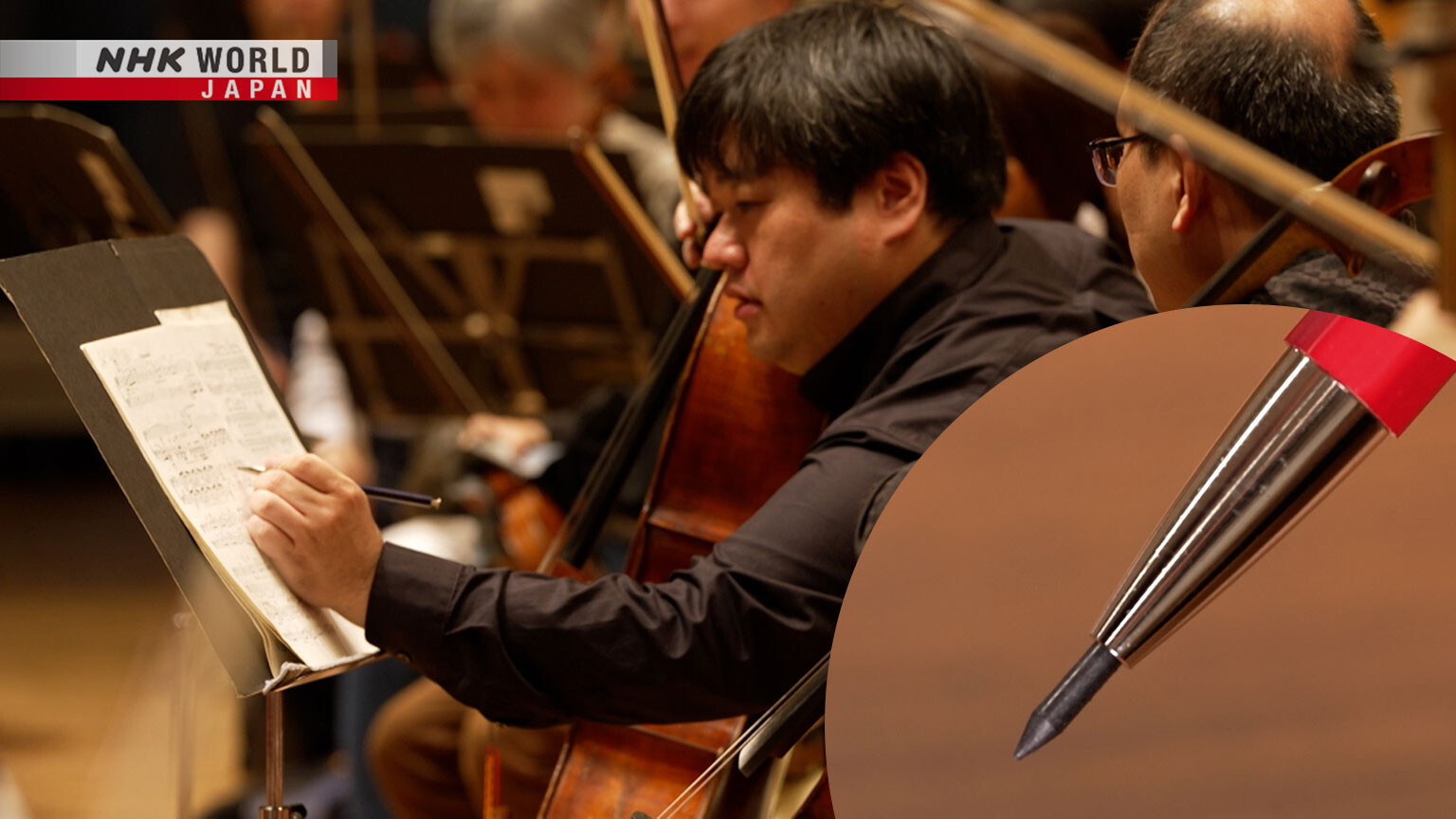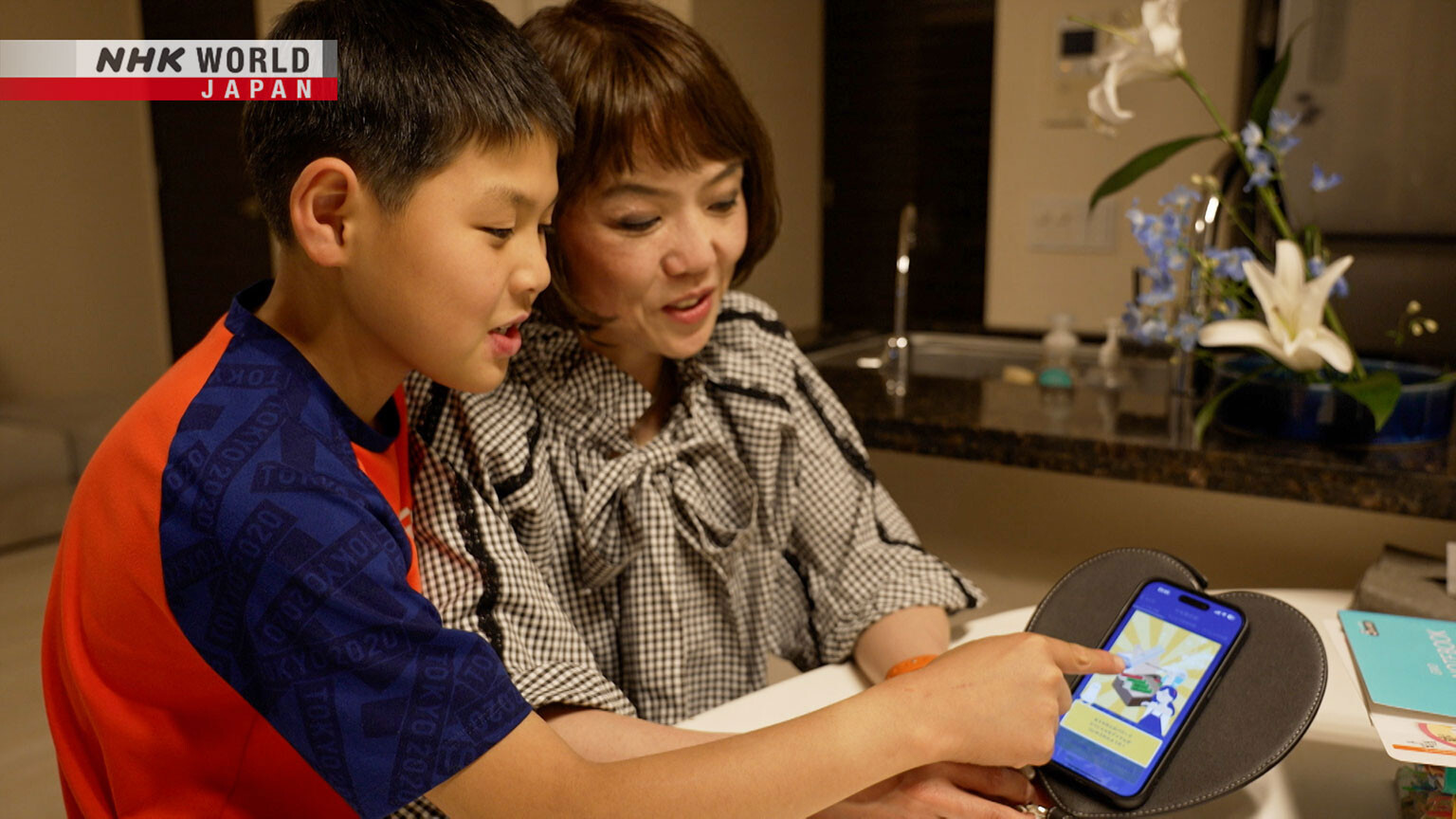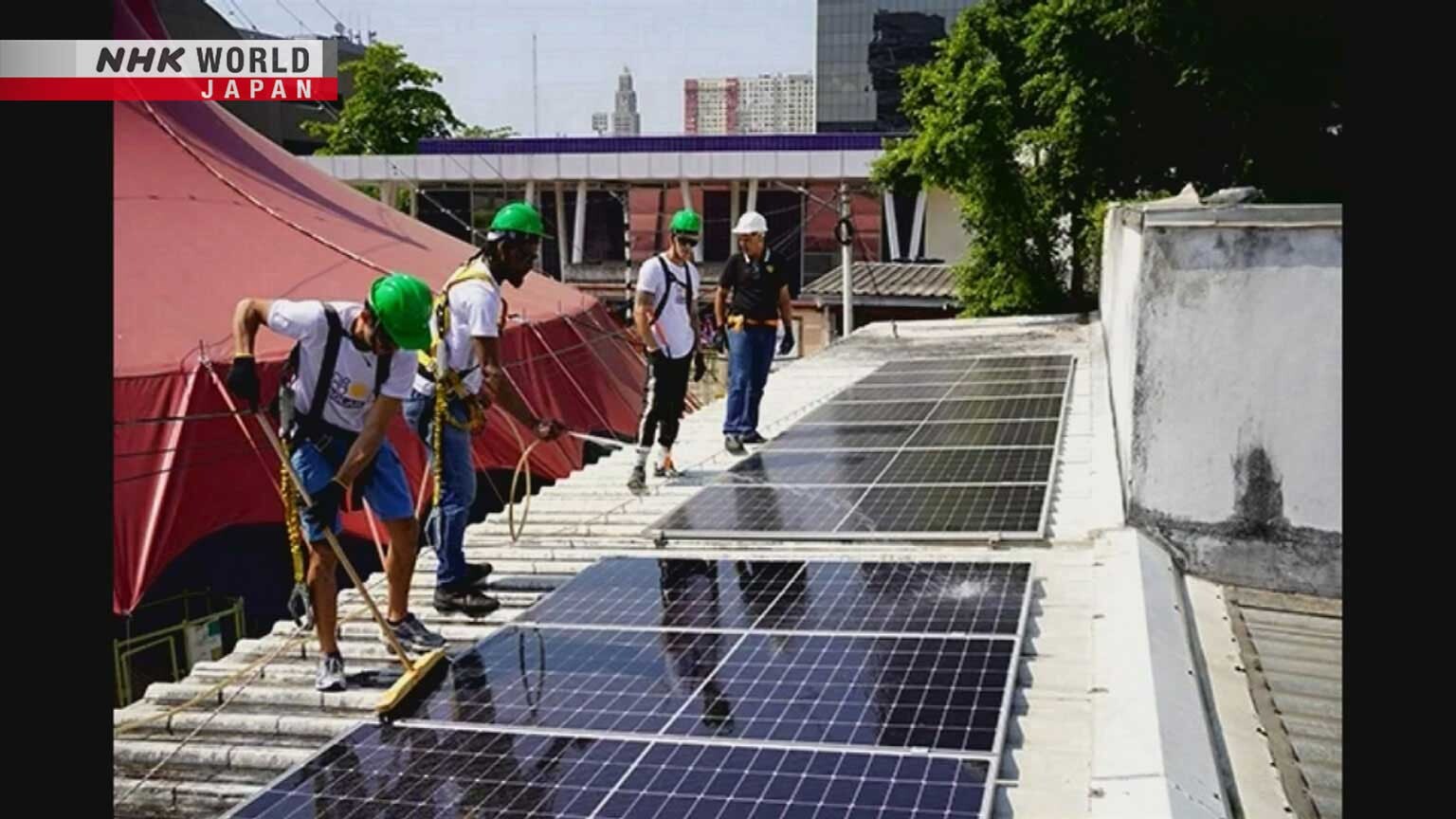Pencils with a Point
[On-Site Report: Pencils with a Point]
This episode features a mechanical pencil that captures the feel of a wooden pencil and an electronic device for children that attaches to their pencils and turns study time into a game.
*Subtitles and transcripts are available for video segments when viewed on our website.
On-Site Report: Pencils with a Point


Global Trends: Solar NGO Brings Power to Brazil's Favelas
Many residents of Brazil's impoverished neighborhoods struggle with the rising cost of living, especially electricity bills. We see how a solar energy initiative is helping to ease that burden.


In Focus: India Election Highlights Youth Unemployment
Voters in India are going to the polls in what's known as the world's largest exercise in democracy. The country's economy is growing fast, but not everyone is benefiting from the boom. Youth unemployment is at alarmingly high levels and may be a pivotal issue in the election.
Transcript
This city near the capital of New Delhi has been developing rapidly in recent years
along with India's fast-growing economy.
High-end condominiums are attracting many buyers in their late 20's and early 30's.
The average age of real estate home buyers has been coming down continuously.
India has a growing number of high-earning young people...like Rajat Jain, who founded a startup 8 years ago.
His company offers devices for electrocardiograms that work through a smartphone app.
He says business is good, and he's eyeing on expansion overseas.
We want to be competing with them in the international market,
you know, coming out of a very small village...very small place in India.
Tech startups like Jain's have been getting support through Prime Minister Modi's initiatives.
Over 100,000 of them have come up during his decade-long tenure.
Significant economic development has been made throughout India over the past 10 years.
But not everyone is reaping the benefits.
The average age in the world's most populous country is only 28.
Experts say job creation is not keeping pace with the millions of people who join the workforce every year.
Kuldeep Sehrawat graduated from a college in New Delhi and has been having difficulty securing a job.
Employment opportunities in the private sector are very limited.
There are only a few openings.
The situation for young people is very severe.
We have great qualifications and potential but can't leverage that in this environment.
One think tank in India estimates the jobless rate among people aged 15 to 24
doubled over a 5-year period...recently topping 45 percent.
These images from a train station in northern India show how dire the job situation is.
Many of the people were on their way to take an exam to qualify for local government jobs.
An estimated 3 million were seeking positions.
The country's opposition coalition has made youth unemployment a key election issue.
Youngsters are running around looking for jobs.
And it's impossible for youngsters to get jobs.
An expert says it will be a real challenge for both the ruling party and the opposition alliance
to create a more equitable employment environment.
He believes the government needs policies to nurture manufacturing among smaller firms throughout the nation.
We are one the most unequal countries in the world now.
Because it's the MSMEs which produce the labor intensive manufacturers,
we need a cross sectoral...horizontal industrial policy, but which is focused on MSMEs, not on large enterprises.
Prime Minister Modi has an eye on winning an overwhelming majority in parliament.
Young voters may play a role in the outcome.
Houses are built on steep slopes, as if stacked one on top of the other.
This area used to be empty.
But people started to move in, and it turned into a favela.
Rio de Janeiro has over 1,000 favelas spread throughout the city.
They are home to about 1.6 million people, or 20% of the population.
A major issue facing residents of these mostly poor neighborhoods is soaring energy costs.
Some spend a third of their income on electricity.
Adalberto Almeida is a licensed electrician who lives in a favela with his wife and three children.
He has a wide range of jobs, from home wiring to appliance repair.
While looking to expand his array of skills, he and his neighbors took inspiration from the sunny skies above Rio.
9 years ago, they founded an NGO called Revolusolar that would bring a new form of energy to the community.
"I didn't think this would support my family financially, but I wanted to learn something new."
Almeida and his associates raised money through donations
to purchase solar panels and install them on the roofs of public facilities.
They sell the solar electricity to power companies and then purchase more solar panels.
Local residents formed a cooperative so that each member would get an equal share of the profits earned from the utility company.
Adding solar energy has resulted in an average 10% reduction in their electricity costs.
"I used to panic when I got an electric bill.
Now the money from solar power helps me."
The NGO hopes to not only support the residents financially but also create employment opportunities.
For 8 years, it has been offering free courses for residents in impoverished areas to train as electricians.
National certification is required to install solar panels.
The Brazilian government at the same time has been offering support for small-scale,
income-generating, solar power projects.
Daniel Barbosa de Souza took the free course.
"This is something that creates an opportunity to get a better paying job."
"Clean energy helps the residents of favelas save money,
teaches them about sustainability and helps protect the environment."
Since 2020, Revolusolar has passed on its know-how to 9 other favelas.
The project has also attracted the attention of Brazil's leaders.
They plan to showcase the initiative as a model for advocating sustainability
and eradicating poverty at the G20 summit later this year in Rio.
In the favelas of Brazil, harnessing the power of the sun is something that's helping to make the future a little bit brighter.
A pencil manufacturer has developed a popular new product that keeps the spirit of the original.
And a stationary company has gone high tech with a new IoT device designed for young students.
Today's On-Site Report features traditional stationary companies
that are developing new products to meet their customers' specific wants and needs.
This company has been manufacturing pencils since 1951.
Standard pencils are made by pressing narrow pieces of graphite between two wooden boards and then cutting them.
With a comfortable grip and a universal look and feel, they are used by people all around the world.
However, as usage of pens, mechanical pencils, and digital devices such as laptops and tablets increase,
many people stop using standard pencils when they finish their education.
At its peak, this factory was producing 30 million pencils per year, but it now produces less than half that amount.
President Sugitani Ryuichi is the 5th member of his family to head Kita-Boshi Pencil Company.
His great-grandfather founded the company over 7 decades ago.
He said, "pencils sacrifice themselves to be of service to us, so as long as there is demand, you must carry on."
So, I am doing my best to keep pencils relevant by meeting the demands of today.
Sugitani felt one of the biggest downsides with standard pencils was that they needed to be sharpened -
which also resulted in messy shavings.
He thought if he could eliminate this issue, the number of people who use pencils might increase,
so he set about developing a new product.
The pencil he created combined the convenience of a mechanical pencil
with the pleasant feel and writing characteristics of a standard pencil.
In order to avoid the need for sharpening he included a mechanical function.
His main focus was ensuring the new design didn't lose the true "essence" of a standard pencil,
so he used a smooth, high quality wooden body.
He went with 2mm lead - the same diameter as a standard pencil.
And chose a type that offered a smooth feel and increased strength.
For people who prefer a pointier tip, he even developed a special lead sharpener.
He spent a full year perfecting the weight and length to ensure it offered the same balance and feel as a standard pencil.
Since its release in 2011, the company has sold over 5 million of them.
They even made their way into the hands of professional musicians.
When writing down the conductor's instructions or marking sheet music,
most musicians use a soft lead pencil to preserve the paper for many years of use.
Mechanical pencils are forbidden as the thin and hard leads they use can damage the paper.
Cellist Katsuki Keisuke has been using one of Sugitani's pencils for the last 7 years.
You can easily adjust it just like this.
I can tell they put a lot of thought into the design because writing with the lead is so smooth,
and the wood body just feels comfortable in hand.
Sugitani's company has also developed a range of watercolor pencils incorporating the same design concept.
Released in December of 2023, they are already receiving high praise from professional artists.
Users can adjust the length of the lead with a unique sliding mechanism.
They can then use a wet brush to achieve the same look as water color paints.
With standard water color pencils, you often have to stop and sharpen them,
which can interrupt your artistic flow and touch.
These pencils are great because I can draw continuously with no interruptions!
Nothing can replace the feel of using a real pencil.
Because of that, I think don't think standard pencils are going anywhere.
That said, I do think they may need to evolve a bit, into a design that better meets the needs of today.
This elementary school student has something attached to his pencil.
It's an IoT device developed by a stationary manufacturer.
It was designed to help keep students motivated when doing their homework...
Unfortunately, it doesn't have any magic powers that will make your kid love studying just by holding it.
Rather, it tracks and shows just how much effort children have put into their studies.
When attached to a pencil, internal sensors record the amount of usage, which is stored on the device.
Mom, come check my results!
All finished?
When he completes his homework and brings the device close to his mother's smartphone, the data is transmitted to an app.
It appears as a stream of "study power" that is shown being poured onto a character's head -
which promptly sprouts an apple tree.
This time, the tree has 4 apples.
Which means he can advance 4 spaces in the board game-like progress map.
Various cards featuring animals and fruits are hidden in the squares along the way to the goal.
Collecting them provides yet another way for children to enjoy using the device.
For the last year, 6th grade elementary student Towa has been using the device almost every day.
Seeing how many apples I can get doubles the sense of accomplishment.
Because I want to advance in the game, I just keep on going.
That means I spend a lot more time studying than I used to.
The device was first released 5 years ago and has become a hit product for the company, selling over 50,000 units to date.
However, the road to producing it wasn't exactly an easy one.
10 years ago, Nakai Nobuhiko was tasked to come up with a digital product,
so he decided to create an IoT based tool - this "Monitoring Pen."
Built-in sensors could tell when the child was doing homework
and then send that information to a parent's smartphone no matter where they were.
This gave them the ability to monitor their child's study time remotely.
However, when he tested out the prototype, the results were disappointing.
When I spoke with parents, many of them said, "I can supervise my children's studies just fine!"
It was like there wasn't any need for it at all.
With his first idea having failed, the pressure was on.
To gain the honest feedback they needed,
Nakai offered parents and their children the opportunity to participate in the company's product development meetings.
After hearing a variety of opinions,
he eventually settled on the idea of creating a digital board game as a way to keep children motivated to study.
He then enlisted the help of 100 children and their parents to try out the prototype.
The positive feedback they received led them to proceed with commercialization.
Realizing that students need to stop and think,
Nakai adjusted the sensitivity of the device so that it would recognize the pencil as being in use
as long as it was still being held properly.
To provide immediate motivation, they added a "study-power" indicator to the top of the pen
in the form of an LED light that changes color in accordance with usage time.
As for the final reward that children can receive when they finish the game?
Nakai left that decision to each family - letting the parents and children decide together on what the prize should be.
After working with so many wonderful children,
I had my heart set on creating a product that would really make them happy.
I also realized how important it is to be passionate about the product you are developing.